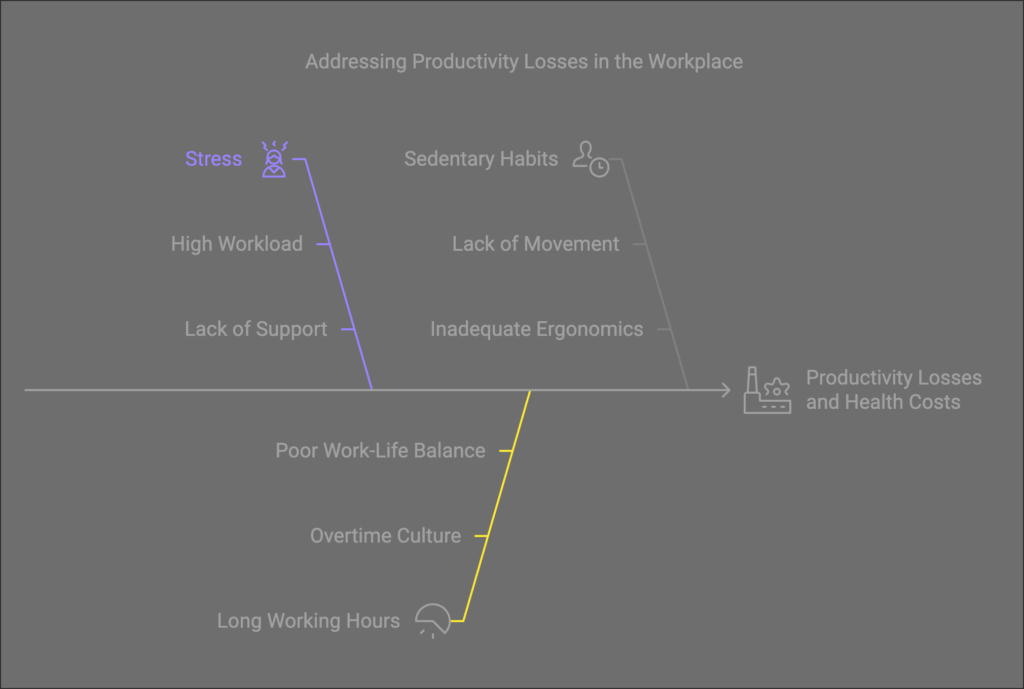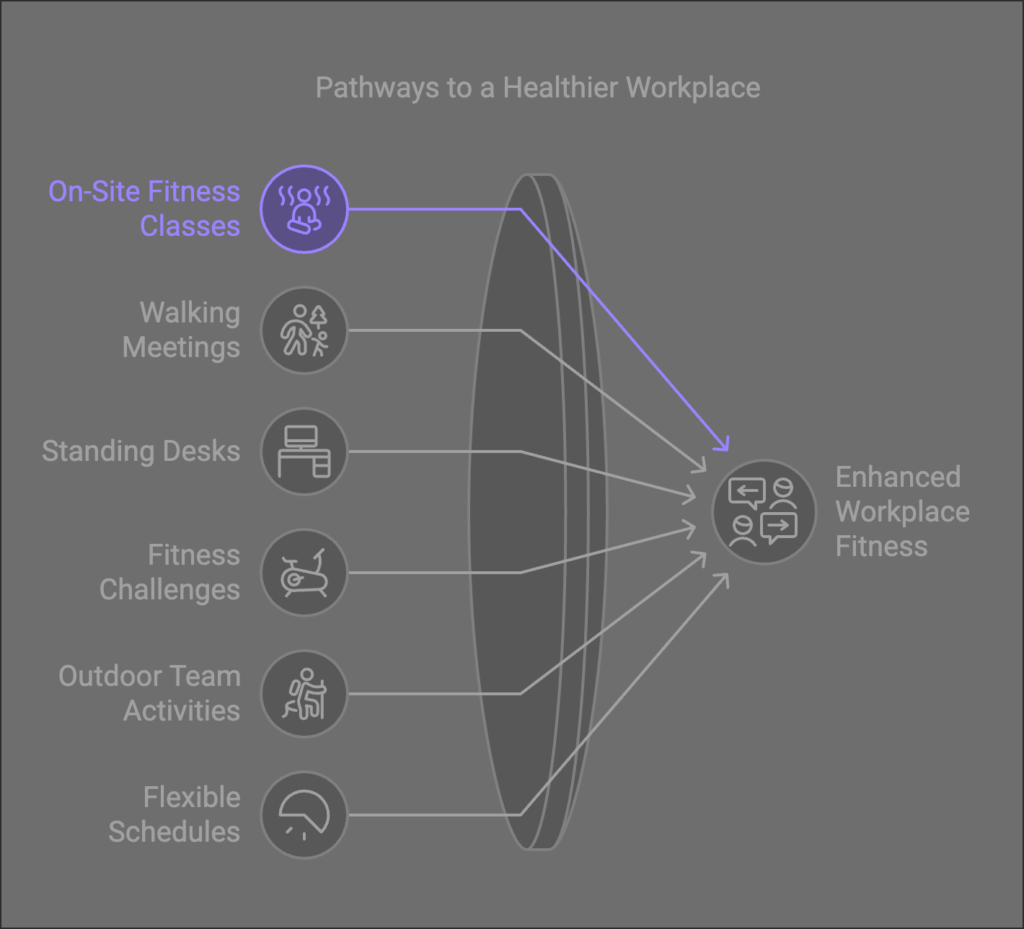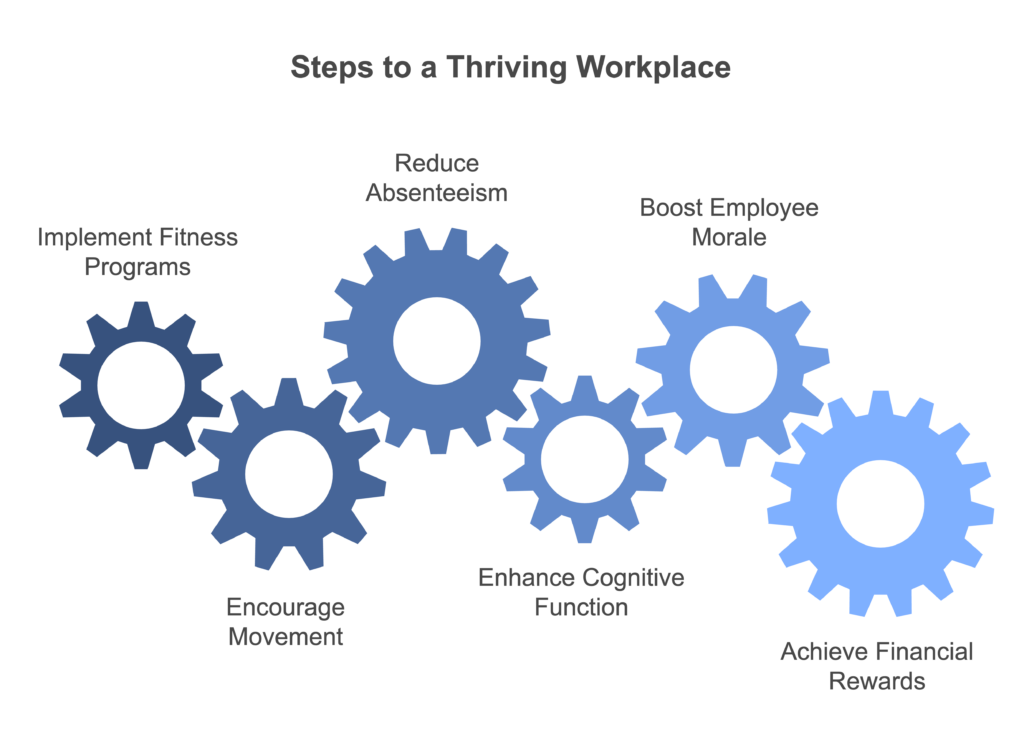Have you ever noticed how a brisk walk or a quick workout can make you feel sharper and more energized? Imagine the impact this could have on your workday. Workplace fitness programs do more than just help employees stay in shape—they improve focus, reduce absenteeism, and foster a thriving workplace culture.
In this article, we’ll uncover how prioritizing fitness at work can drive productivity, backed by research and actionable strategies.
The Problem: Declining Productivity and Health Costs
It’s no secret that many workplaces are grappling with low productivity levels and rising health-related expenses. Factors like stress, long working hours, and sedentary habits contribute to absenteeism and reduced engagement. In fact, a report by the Centers for Disease Control and Prevention (CDC) highlights that productivity losses linked to absenteeism cost U.S. employers $225.8 billion annually, or $1,685 per employee (CDC, 2020).
But what if there was a way to combat this? Fitness programs at the workplace are proving to be an effective solution.

Sedentary Work and Its Impact on Cognitive and Physical Performance
The modern work environment often revolves around desk jobs, leading to prolonged sitting and limited physical activity. Research published in the Journal of Occupational and Environmental Medicine found that sedentary behavior negatively impacts cognitive performance, contributing to slower decision-making and reduced focus (Hoehner et al., 2012). Additionally, physical inactivity is associated with fatigue and a greater risk of chronic conditions like heart disease and diabetes, which directly affect workplace efficiency.
The Solution: Workplace Fitness Programs
1. Boosting Cognitive Function Through Exercise
Exercise has a profound impact on brain health. Studies show that physical activity increases blood flow to the brain, enhancing memory, concentration, and decision-making. A meta-analysis published in Neuropsychologia found that moderate exercise significantly improves cognitive performance, particularly in tasks requiring sustained attention (Smith et al., 2010). Incorporating fitness activities like yoga or aerobic sessions into the workday can lead to sharper minds and better problem-solving.
2. Reducing Absenteeism
Employees who participate in fitness programs are less likely to call in sick. A study conducted by the Harvard Business Review revealed that companies investing in wellness programs experienced a 28% reduction in sick days (Berry et al., 2010). By promoting regular physical activity, employers can combat issues like burnout and stress, creating a healthier workforce.
3. Enhancing Employee Engagement
Wellness initiatives signal to employees that their well-being matters. This fosters loyalty and morale. Companies with active wellness programs often report higher levels of employee engagement and teamwork. Group activities like fitness challenges or lunchtime walks not only improve physical health but also encourage social bonding, which translates into stronger collaboration at work.
Practical Ways to Introduce Workplace Fitness Programs
Ready to make fitness a priority in your workplace? Here are actionable steps to get started:
- On-Site Fitness Classes: Offer yoga, pilates, or Zumba sessions during lunch breaks.
- Walking Meetings: Replace seated meetings with walking discussions.
- Standing Desks: Provide ergonomic furniture to reduce sedentary habits.
- Fitness Challenges: Organize monthly or quarterly step-count or activity competitions with rewards.
- Outdoor Team Activities: Arrange hiking trips, sports events, or charity runs to build team spirit.
- Flexible Schedules: Allow employees time for gym visits or workout breaks during the day.

Case Study: A Success Story
One shining example is Google, known for its comprehensive employee wellness initiatives. The company offers on-site gyms, fitness classes, and even nap pods to promote well-being. As a result, Google employees report higher satisfaction and productivity levels compared to industry benchmarks. This demonstrates that an investment in health is an investment in performance.
The Takeaway: A Win-Win for Employers and Employees
By incorporating fitness programs, businesses can create a healthier, more engaged workforce while reaping financial rewards. Reduced absenteeism, sharper minds, and higher morale are just some of the benefits of prioritizing employee health. Whether it’s through group classes, standing desks, or fitness challenges, small steps can lead to significant changes.
So, why not take the first step today? Encourage your team to move more, and watch your workplace thrive!

References
Berry, L. L., Mirabito, A. M., & Baun, W. B. (2010). What’s the hard return on employee wellness programs? Harvard Business Review, 88(12), 104-112.
Centers for Disease Control and Prevention (CDC). (2020). Worker productivity and health. Retrieved from https://www.cdc.gov
Hoehner, C. M., et al. (2012). Sedentary behavior and workplace productivity: A study. Journal of Occupational and Environmental Medicine, 54(5), 566-572.
Smith, P. J., Blumenthal, J. A., Hoffman, B. M., Cooper, H., Strauman, T. A., Welsh-Bohmer, K., & Sherwood, A. (2010). Aerobic exercise and neurocognitive performance: A meta-analytic review of randomized controlled trials. Neuropsychologia, 48(9), 2475-2484.
